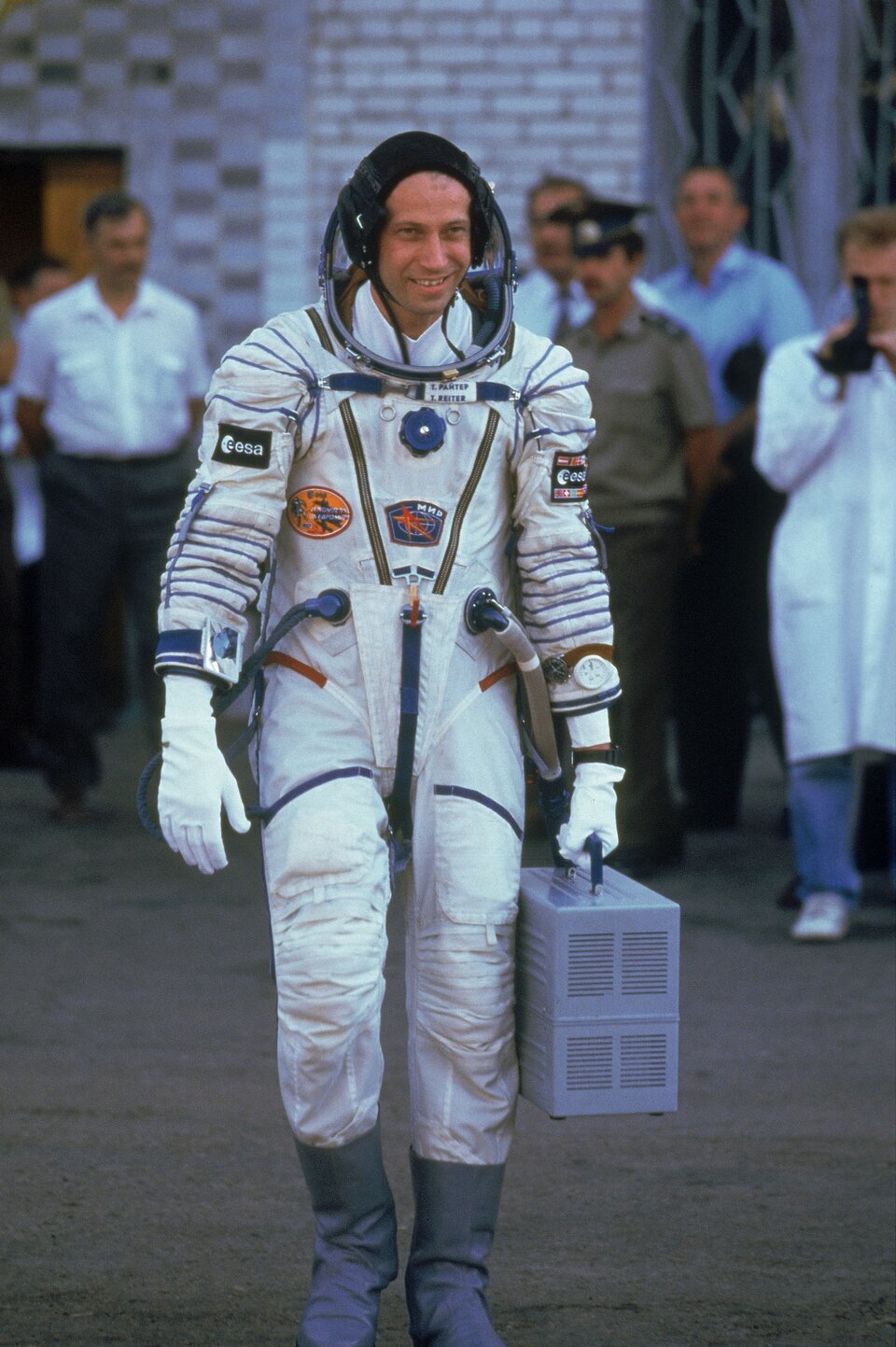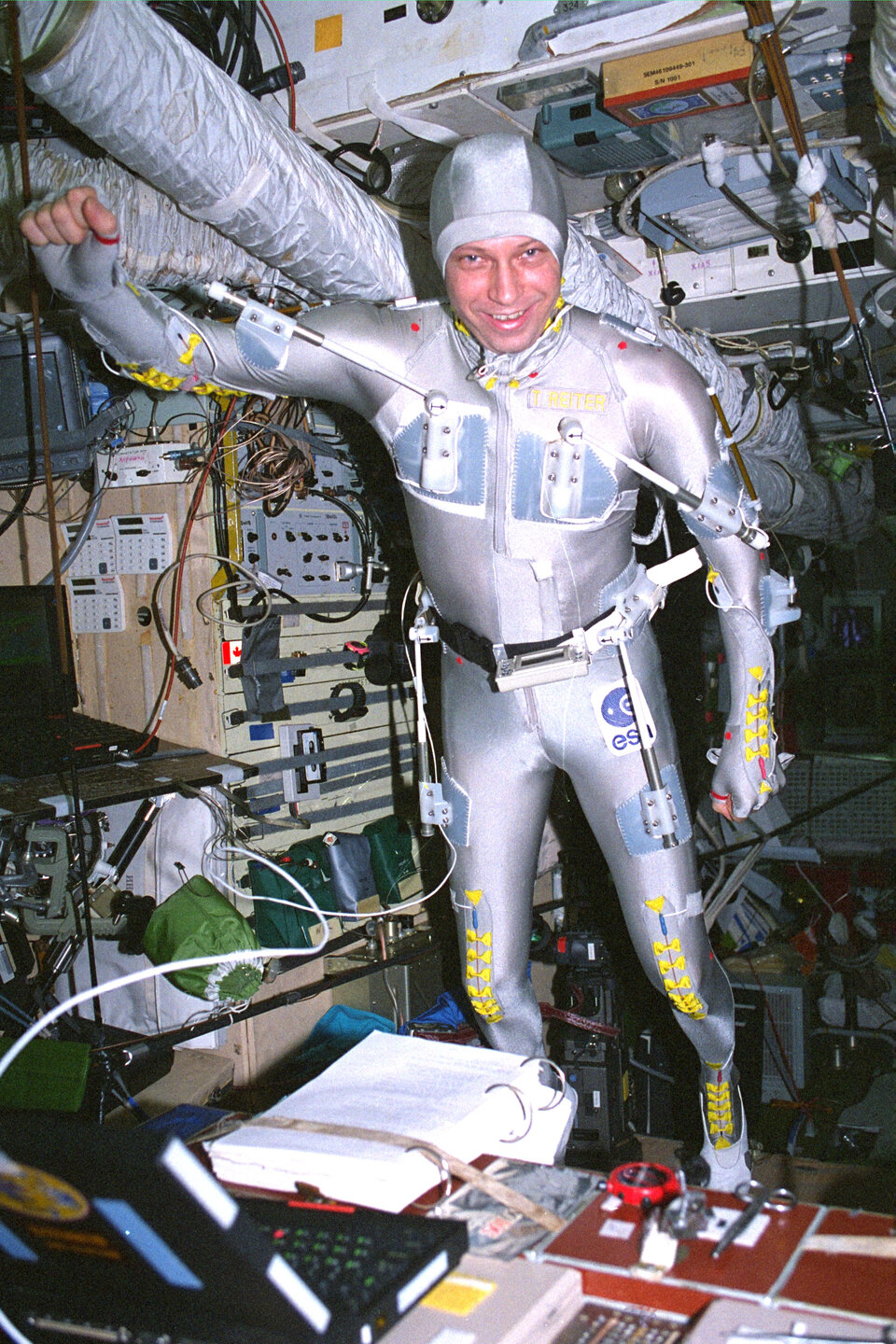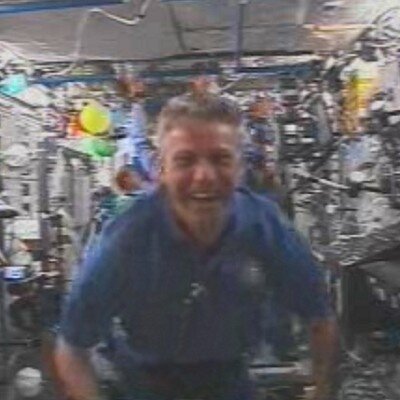Thomas Reiter: Europe's most experienced astronaut
By 2007, 451 men and women had flown in space, but only 24 (23 Russians and one American) had stayed there longer than Thomas Reiter. Most had taken three to six spaceflights to achieve their record, but Reiter clocked up his stay of 350 days in only two flights, giving Europe an unprecedented insight into long-duration human spaceflight missions.
Thomas Reiter was born in Frankfurt, Germany, on 23 May 1958, just as the space race between the Soviet Union and the United States began heating up and the same month that Sergei Korolev and his team began designing the Vostok spacecraft in deep secrecy.
His parents, both glider pilots, gave him a taste for flying so when he graduated at 19 from the Goethe High-School in Neu Isenburg he enlisted in the German military with the aim of becoming a pilot. He entered the Armed Forces University in Neubiberg where he gained a Masters Degree in Aerospace Technology in the field of astronautics. The year was 1982 and the Space Shuttle had begun to make its first flights.
As a military pilot in the Luftwaffe, Reiter was sent to Sheppard AFB near Wichita Falls in Texas, under the Euro-NATO Joint Jet Pilot Training (ENJJPT) Programme. Back in Germany he flew in a fighter-bomber squadron based in Oldenburg, but deciding that being a jet pilot was not enough, he became involved in developing computerised mission planning systems, a flight-operations officer and deputy squadron commander.
From test-pilot to astronaut

In 1990, Reiter completed special training in Manching and qualified as a test-pilot. This new qualification allowed him to become involved in numerous flight test projects as well as ESA studies for the Hermes spaceplane and developing equipment for ESA’s Columbus module.
In May 1992 he was selected to join the European Astronaut Corps, but training had to be delayed as Reiter was also chosen to join the world's most famous test-pilot training centre: the Empire Test Pilots' School at Boscombe Down, England. Other ESA astronauts had preceded him, Jean-Pierre Haigneré, Michel Tognini and Frank De Winne.
On completing basic training at the European Astronaut Centre (EAC) in Cologne, Thomas Reiter was selected for his first space mission - Euromir '95. In 1993 he went to the Gagarin Training Centre near Moscow, also referred to as Star City, to undergo the extensive training needed to embark on the Soyuz TM spacecraft and the Mir space station as a flight engineer. Part of his training consisted in learning how to carry out extravehicular activities.
To space and back

On 3 September 1995 Reiter became the 8th German and the 19th Western European astronaut to reach space when he lifted off from Baikonur, Kazakhstan on the Soyuz TM-22 together with two Russian cosmonauts. He returned to Earth on 29 February 1996 after a record-breaking 179-day flight. During his six-month mission he became the first German astronaut to conduct extravehicular activities and made two spacewalks totalling more than eight hours.
Around six months after his flight he returned to Star City to learn how to pilot, operate, dock and land the Soyuz spacecraft. In July 1997 he received his Soyuz Return Commander certificate, a qualification that allows him to command a three-person Soyuz capsule during its return from space. In parallel, he brought his first-hand knowledge of in-space operations to the European Robotic Arm (ERA) development team at ESA.
In September 1997 Thomas Reiter - still a colonel in the German military forces – was detached from the European Astronaut Corps for 18 months to return to the Luftwaffe as Operational Group Commander of a Tornado fighter-bomber wing, after which he returned to EAC in Cologne.
Here he used his experience to support various ESA programmes such as ERA and the Automated Transfer Vehicle. From June 1999 to March 2000 he resumed training at Star City on the Russian segment of the International Space Station (ISS). Then in April 2001 he was assigned to the first ISS advanced training class, to prepare for the first European long-term flight on the ISS.
Return to space

The Columbia tragedy in February 2003 led to a three-year delay in the assembly of the ISS. At the time the first long-term flight of a European astronaut seemed far away but then, thanks to an agreement with Russia, in September 2004 Thomas Reiter was assigned to a six-month mission on the ISS in replacement of a Russian astronaut; the mission was called 'Astrolab'.
This time he was launched on NASA's Space Shuttle Discovery on 4 July 2006. His arrival at the ISS restored the position of third permanent crewmember, a post discontinued three years earlier when the shuttle was grounded.
His job on the ISS was to carry out maintenance and support operations as well as scientific experiments and technology demonstrations. On 3 August he also made a six-hour spacewalk. At the end of his mission, after 171 days in space, he was picked up by the Space Shuttle Discovery and brought back to Earth together with fellow ESA astronaut Christer Fuglesang, the first Swedish astronaut in space.
With a cumulative time in space of 350 days, Thomas Reiter set a new record for European astronauts, beating the previous record of 209.5 days set by ESA astronaut Jean-Pierre Haigneré in 1999.








